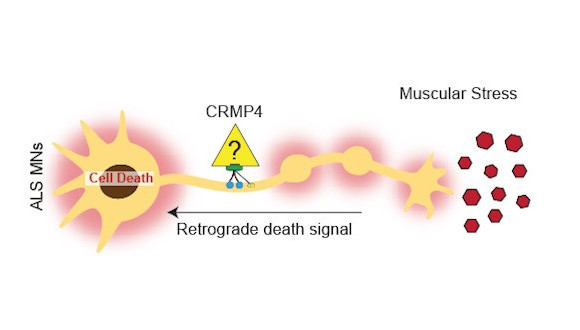TAU discovery sheds new light on elusive workings of ALS

Research could lead to new avenues towards drug development
Support this researchResearchers from Tel Aviv University (TAU) have identified a previously unknown intracellular process in amyotrophic lateral sclerosis (ALS) that may serve as a basis for the development of new treatments for the fatal neurodegenerative disease.
“Our discovery provides new encouragement for developing ALS treatments,” says the study’s lead researcher, Professor Eran Perlson of the Department of Physiology and Pharmacology at TAU’s Sackler Faculty of Medicine and Sagol School of Neuroscience. “It may open new channels for research on the long-term communication between the various nerve regions that are critical for better understanding the pathological processes of ALS.”
The new research reveals a mechanism in which mutated CRMP4 proteins associated with ALS serve as a “death signal” promoting motor neuron loss. The researchers suggest that blocking this mechanism by genetic or pharmacological means could reduce motor neuron death, and thereby reduce symptoms of ALS.
While the development contributes to the type of understanding needed to underpin further advances, the researchers note that the prospect of treatment development based on the discovery is still years away.
The findings were published on June 30, 2021, in The EMBO Journal.
ALS causes the brain to lose its ability to control the body’s muscles; it is typically fatal within two-to-five years of symptom onset. The progressive loss of muscle action in ALS can make it impossible to eat, speak, move, and ultimately to breathe. The devastating disease affects an estimated 450,000 people worldwide, with increasing diagnosis rates equivalent to approximately one new case every 90 minutes.
Although experts have made significant advances in ALS research, its exact cause remains largely unknown. Additionally, there is currently no effective cure or treatment for the disease.
To pave the way for drug development, researchers need a better understanding of the basic mechanisms by which ALS attacks and destroys nerve cells in the brain and the spinal cord that control body movement. The deterioration of these nerve cells, called motor neurons, leads to muscle paralysis in the limbs and gradually the whole body. Although much remains to be discovered, the scientific community lauds each new insight into ALS for contributing to progress. Such advances, in turn, provide additional hope to the prospect of eventual treatments that could greatly improve and save lives.
The researchers used a special biological chip system they developed that allowed them to study how the motor neurons and the musculoskeletal system are destroyed in ALS. Via the unique system, the researchers grew and sorted stem cells into nerve cells. Using advanced biochemical and molecular microscopy methods, the researchers studied the process of nerve cell death in ALS.
The research was led by TAU’s Dr. Roy Maimon and postgraduate student Lior Ancol from Professor Perlson’s lab, together with research associate Tal Gardus Pery, Topaz Altman, and Ariel Ionescu. Participating researchers in Israel and abroad included Professor Martin Balastik of the Czech Academy of Sciences, Professor Sami Baramada of the University of Michigan, Dr. Amir Dori of Sheba Medical Center at Tel Hashomer, and Professor Yarden Opatowsky of Bar-Ilan University.